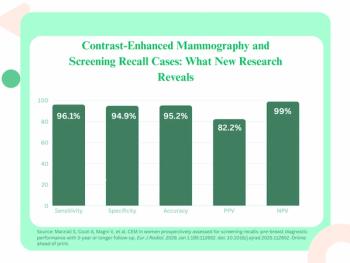
Scientific discovery adds spice to Britton Chance's long life
Dr. Britton Chance is one of the most inventive people in biomedical imaging.
Dr. Britton Chance is one of the most inventive people in biomedical imaging. But don't expect him to dwell on his past accomplishments. The 93-year-old emeritus professor of biophysics, physical chemistry, and radiologic physics at the University of Pennsylvania prefers to stay firmly attached to the present tense.
"There are many things about my career that are very satisfying, but if I stopped and simply enjoyed the past tense, I wouldn't enjoy the present and future tenses," Chance said while sitting in his lab surrounded by a gaggle of fellows. "Even this morning, I was battling with a conundrum, in which I could only dimly see the way to go. It's the continuous challenge of unremitting problems that keeps one going."
Chance, who rides his bicycle to work most days, is researching the use of near-infrared spectroscopy in three areas: cancer detection through angiogenesis, hypermetabolism, and molecular beacons; cognitive imaging by way of metabolic responses and hemodynamic response; and muscle function via oxygenation and blood volume in exercise. It's a full agenda for a researcher whose research spans seven decades.
Chance prefers diagnostic and therapeutic methods that rely upon intrinsic rather than extrinsic signals. The former requires no toxicology efficacy tests and hence faces fewer FDA hurdles. He and colleagues recently published results of a six-year study using NIR spectroscopy to detect breast cancer in 116 women with suspicious mammograms (Acad Radiol 2005;12[8]:925-933). NIR spectroscopy of total hemoglobin and its relative oxygenation were monitored in breast cancers and compared with their contralateral breasts in a 2D nomogram for diagnostic evaluation.
Researchers used an electronic handheld NIR cancer detector that they placed on the subject's breast. The device uses light emitting diodes that can penetrate 5 cm of tissue. Breasts can be scanned from any side, allowing the evaluation of 10-cm breasts. Not only is the method convenient and fast, but it achieved high patient compliance with minimal patient apprehension of compression, Chance said. The device suffered only two false negatives, for a ROC of 95%. The two metrics indicative of cancer were increased hemoglobin concentration due to angiogenesis and decreased hemoglobin saturation due to hypermetabolism of the cancer.
"This has very few false negatives, which should alert the liability-conscious radiologist," Chance said.
Advanced Research Technologies (ART) in Saint-Laurent, Canada, acquired the exclusive license to Chance's time-domain optical imaging technology used in NIR spectroscopic tissue imaging. (Chance's company, Non-Invasive Technology, has more than 40 patents for various technologies in the field of optical imaging for medical uses.) Three methods exist for decoding optical imaging data: continuous wave, frequency domain, and time domain. The last method generates the most information possible about tissue, according to Mario Khayat, vice president of optical products for ART.
The company is readying to market the SoftScan Optical Breast Imaging System, which makes use of Chance's patents. Pivotal trials are under way at eight clinical sites in Canada and the U.S., including Martin Memorial Health Systems in Florida, the University of California, San Diego, and Massachusetts General Hospital. SoftScan successfully discriminated between malignant and benign lesions, but these readings were in an ideal medical setting, Khayat said.
"Now we have to do it in a community setting," he said.
SoftScan's clinical role will be to obviate the need for biopsy after a suspicious mammogram. If the optical scanner doesn't detect angiogenic blood flow, the patient need not undergo any other imaging or biopsy. Unlike mammography, the technology works well with dense breasts.
A complementary research program involves proteins that fluoresce under near-infrared light. In 1955, Chance discovered two fluorochromes that live in mitochondria, but the advantages of those signals relating to cancer have become apparent only recently. The intrinsic signals give a metric of apoptosis, the degree of cell death. This type of information is potentially important to determine early on whether a new cancer drug or treatment is working. Following a core biopsy, the specimen would be optically scanned.
"If the optical scan detects apoptosis, it indicates the efficacy of attempts to stop tumor growth. Drug companies want to use this to monitor new drugs," Chance said.
All cells contain mitochondria, which, with the two fluorescent signals as biomarkers, will indicate whether apoptosis has occurred. The technique holds promise in many areas including head and neck, prostate, and heart.
Another six-year project of Chance's involved the use of the "cogno-sensor," which employs similar NIR spectroscopic imaging. Researchers documented the cognitive function of healthy high school students (Alzheimer's & Dementia: The Journal of the Alzheimer's Association 2005;1[1]supp:51). They found the device can obtain two signals. One represents increased blood flow during cognitive function and is similar to the blood oxygen level-dependent signal in MRI; the other is a novel signal, namely, activity-induced desaturation of hemoglobin, which is a measure of anabolic activity and brain functional activations. The next step is to evaluate deviations from these norms in elderly patients suffering from memory problems, possibly indicative of Alzheimer's disease.
"The optical imaging is convenient, fast, and economical," Chance said. "Access to a large population of those who feel cognitively impaired by Alzheimer's disease seems a highly important and necessary study."
Newsletter
Stay at the forefront of radiology with the Diagnostic Imaging newsletter, delivering the latest news, clinical insights, and imaging advancements for today’s radiologists.




























